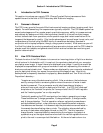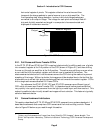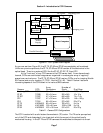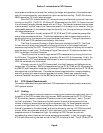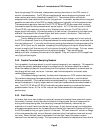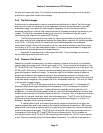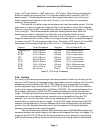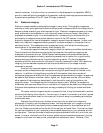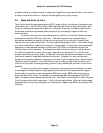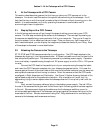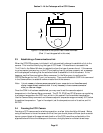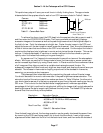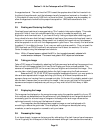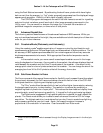Section 2 - Introduction to CCD Cameras
Page 12
readout noise less. It is handy when no connection to the telescope drive is possible. SBIG is
proud to make self-guiding available to the amateur, making those long exposures required by
the small pixel geometry of the ST-7 and ST-8 easy to achieve!
2.5. Electronic Imaging
Electronic images resemble photographic images in many ways. Photographic images are
made up of many small particles or grains of photo sensitive compounds which change color or
become a darker shade of gray when exposed to light. Electronic images are made up of many
small pixels which are displayed on your computer screen to form an image. Each pixel is
displayed as a shade of gray, or in some cases a color, corresponding to a number which is
produced by the electronics and photo sensitive nature of the CCD camera. However,
electronic images differ from photographic images in several important aspects. In their most
basic form, electronic images are simply groups of numbers arranged in a computer file in a
particular format. This makes electronic images particularly well suited for handling and
manipulation in the same fashion as any other computer file.
An important aspect of electronic imaging is that the results are available immediately.
Once the data from the camera is received by the computer, the resulting image may be
displayed on the screen at once. While Polaroid cameras also produce immediate results,
serious astrophotography ordinarily requires hypersensitized or cooled film, a good quality
camera, and good darkroom work to produce satisfying results. The time lag between
exposure of the film and production of the print is usually measured in days. With electronic
imaging, the time between exposure of the chip and production of the image is usually
measured in seconds.
Another very important aspect of electronic imaging is that the resulting data are
uniquely suited to manipulation by a computer to bring out specific details of interest to the
observer. In addition to the software provided with the camera, there are a number of
commercial programs available which will process and enhance electronic images. Images may
be made to look sharper, smoother, darker, lighter, etc. Brightness, contrast, size, and many
other aspects of the image may be adjusted in real time while viewing the results on the
computer screen. Two images may be inverted and electronically "blinked" to compare for
differences, such as a new supernova, or a collection of images can be made into a large mosaic.
Advanced techniques such as maximum entropy processing will bring out otherwise hidden
detail.
Of course, once the image is stored on a computer disk, it may be transferred to another
computer just like any other data file. You can copy it or send it via modem to a friend, upload
it to your favorite bulletin board or online service, or store it away for processing and analysis
at some later date.
We have found that an way to obtain a hard copy of your electronic image is to
photograph it directly from the computer screen. You may also send your image on a floppy
disk to a photo lab which has digital photo processing equipment for a professional print of
your file. Make sure the lab can handle the file format you will send them. Printing the image
on a printer connected to your computer is also possible depending on your software/printer
configuration. There are a number of software programs available, which will print from your
screen. However, we have found that without specialized and expensive equipment, printing
images on a dot matrix or laser printer yields less than satisfactory detail. However, if the




